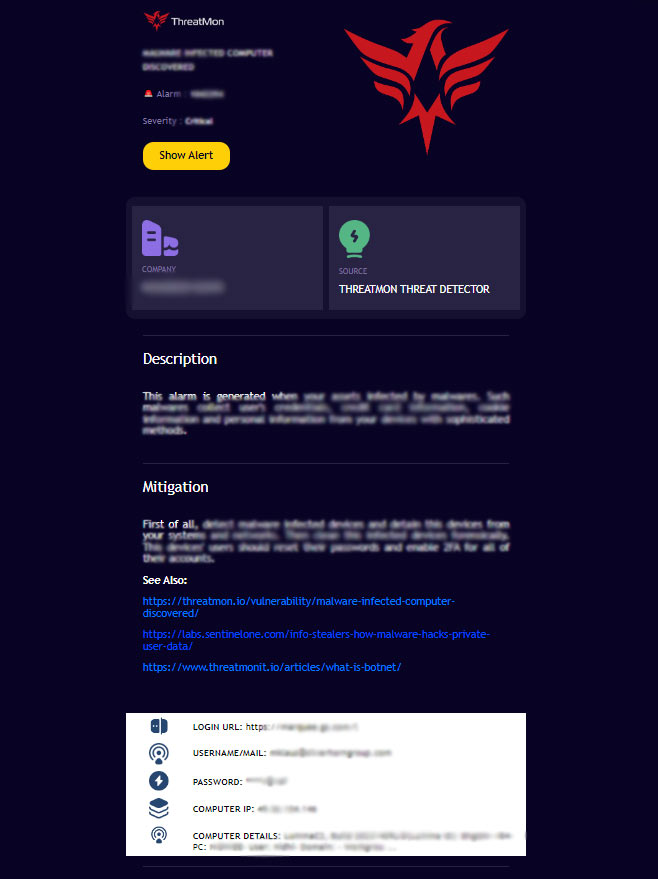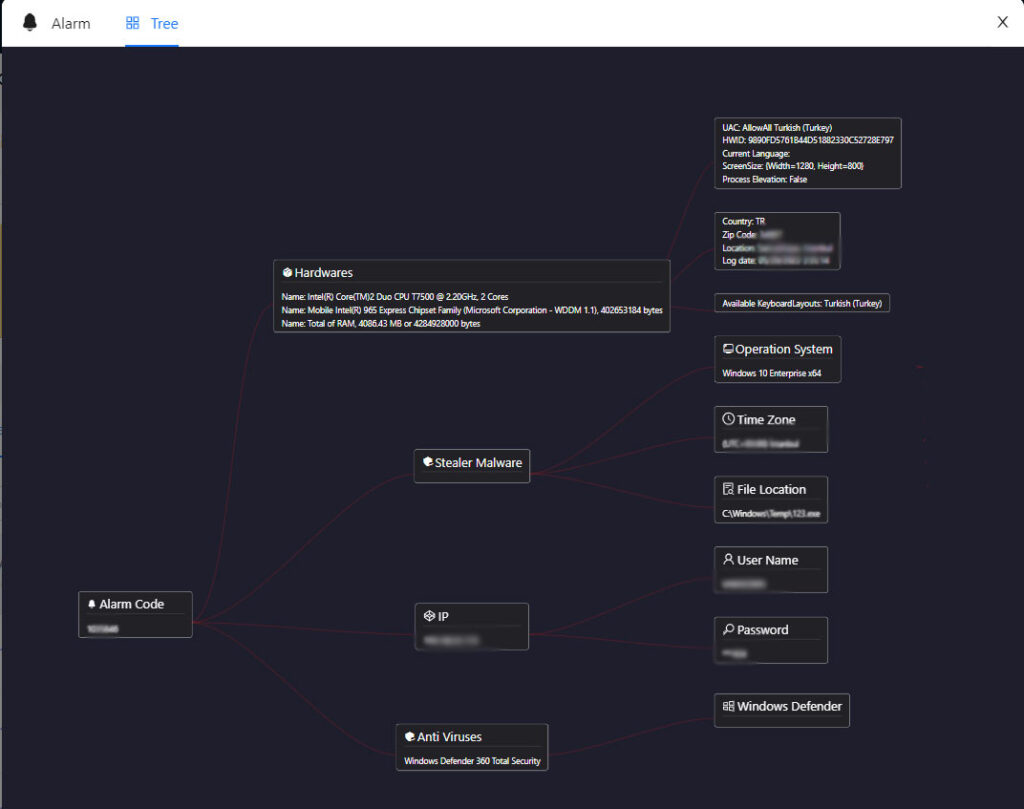
The new era of the digital domain has brought the world closer together in unprecedented ways, offering a level of ease and expedience that has never before been possible. However, it has also created its own unique set of security-related problems, including one of the most serious and evolving kinds of stealer logs. What exactly are stealer logs, what do they mean for security, and how can strategists make the best of the environment they find themselves in?
Stealer logs are a kind of digital journal documenting the activity of software designed to steal data from the systems it infects. Typically, stealer logs will record identifiers for login profiles and financial accounts, dates of birth or social security numbers, as well as numerous other sensitive data. The malicious software that creates stealer logs (aka info-stealers) can spread through phishing links, or malware circulated online, or it can exploit vulnerabilities in out-of-date software.
Next, the pilfered credentials are stored in a database known as a ‘log.’ Hackers strike a deal on one of the dark web forums or online marketplaces to purchase or trade the logs. Stealer logs are proliferating and top the list of the digital black market, paving the way for a variety of crimes such as identity theft, financial fraud, and corporate espionage. The massive sales network of stealer logs has turned them into an inevitable factor in the world economy. Considering the threat these stealer logs pose to individuals, businesses, and national security, it is essential to take preventative action.
The way in which info-stealers operate may be complicated and interactive and consist of a series of stages. First, malware must be installed on the targeted system. Generally, an info-stealer will make its way to a target computer via social engineering, best reflected through a phishing message containing a malicious link or attachment for the user to run. After acquisition, the malware may be able to execute the payload, a function sequence that scans the device for sensitive information.
The goal of an info-stealer is to be as stealthy and efficient as possible. Therefore, the program is designed not to trigger any intrusion-prevention systems guarding the victim’s computer and network. To prevent detection by antivirus software and firewalls, attackers frequently use code obfuscation and encryption techniques. After all the data is collected, the program sends it along to a command-and-control (C2) server that the attacker controls. This data is then processed to create stealer logs or lists of stolen data, which can be sold and traded on cybercrime markets.
The effects of stealer logs can be wide-ranging, long-lasting, and horrible. Individuals can have identities stolen or bank accounts emptied due to the theft of credentials. They can be forced into a life of disastrous debt because of purchases made on their plastic without their knowledge – or even sold into the dark digital recesses of their nightmares, courtesy of a booming involuntary pornography industry that infects the very machines charged with our children’s online safety. You might not be particularly worried about these threats to your digital existence (you shouldn’t be angry at your attacker if what was stolen can be replaced). But even so, stealer logs are still a problem. Nobody likes an infection, and for some, the effects can be life-changing.
The stakes for organizations are even higher. A single breach could overwhelm tens of thousands, sometimes millions, of records in one fell swoop, potentially triggering a series of data breaches that can damage a company’s reputation and cost millions in fines. The theft of intellectual property, trade secrets, or other confidential business information could undermine a company’s competitive advantage or disrupt its operations.
On top of that, remote work has vastly increased the attack surface for cybercriminals, as employees access company systems from their less secure home base and introduce vectors that info-stealers can use to breach the network; it has also made it more difficult for IT departments to maintain a strong security architecture for a distributed workforce.
The growth of stealer logs leads to more and more complicated issues this time around; classic perimeter-based defenses such as firewalls and antivirus software may not be enough to withstand this kind of cyberattack. Cybersecurity strategies should also step up to meet this multi-layer challenge.
Among the most important is threat intelligence. Machine learning, pattern matching, and other advanced analytics can be employed to gain insights about potential threats early on and develop strategies to withstand them. Threat intelligence platforms can extrapolate information from a plethora of data sources to identify patterns and indicators of compromise with the intention of informing security strategies.
ThreatMon is a valuable tool in this context. It offers comprehensive threat intelligence capabilities that can help organizations detect and respond to threats posed by stealer logs. ThreatMon continuously monitors network traffic and system activities, using advanced analytics to identify suspicious behavior and potential compromises. It’s real-time alerting and detailed reporting provide security teams with actionable insights, enabling them to mitigate threats before they can cause significant damage. By integrating ThreatMon into their cybersecurity strategy, organizations can enhance their ability to protect sensitive data and maintain robust security postures against evolving cyber threats.

Furthermore, endpoint security has emerged an important element because in many cases the info-stealers catch single devices, securing endpoints becomes key to stopping the theft of data, so we use anti-malware solutions with advanced endpoint protection with real-time detection capabilities – such as behavioural analysis and anomaly detection of any suspicious activity.

Stealer logs have limited impacts as long as regulatory compliance acts as a deterrent against malicious usage. Governments and regulatory agencies have enacted various data protection laws and regulations to ensure that the information is processed and transferred in a secure manner. The General Data Protection Regulation (GDPR), a ubiquitous data privacy law that came into effect in Europe in 2018, specifies how organizations collect and manage personal data. The penalties for not adhering to GDPR are severe.
Organizations will need to comply with these rules by adopting strict measures to protect data and monitoring for vulnerabilities in their systems through regular audits. In addition to preserving privacy, compliance can demonstrate a commitment to protecting sensitive information that can result in customers being more trusting and loyal.
There are five main lessons to learn from Stealer Logs.
Cyber hygiene involves habits or practices such as regular software updates, requiring strong passwords, adopting the use of multi-factor authentication, or training employees not to fall for phishing ploys. They’re the sorts of actions that companies can use to minimize the amount of times an info-stealer finds purchase.
With the constantly evolving nature of cybersecurity threats, there is a need for advanced security technologies to keep pace. Next-generation firewalls, intrusion detection systems, use of artificial intelligence, IoT, and Machine Learning, driven security platforms, and real-time threat monitoring and threat hunting can help protect entities from advanced cyber attacks.
Developing a culture of security begins with creating an organization where everyone, from a company’s C-suite to its front-line employees, is educated on security and made to take responsibility for its day-to-day. Security training and awareness programs can help get employees to act as the first line of defense.
Ultimately, keeping up with cyber threats demands constant collaboration. Businesses should consider joining collaborative information-sharing initiatives that draw participants from industry, government, and cybersecurity service providers, share threat intelligence for insights on growing threats and tactics, and receive best-practice guidance for defending against threats that arise.
As much as we take advantage of controls to prevent losses, you cannot avoid breaches all the time. That’s why it’s important to be ready in incident response: you define your roles and responsibilities; you formalize your communications protocol; you practice your drills. A resilient incident response team can actually minimize financial loss by expeditiously containing the effect of a breach.
A good cyber insurance policy can provide the financial backing needed to cope with the costs associated with a data leak or cyberattack. This can include the cost of lawyers, notifying victims, and fixing the problem. Organizations would be wise to evaluate the availability of cyber insurance in their decision calculus for investing in IT security. Of course, cyber insurance is no substitute for proper cybersecurity. But, in the cold light of day, it provides a helpful backstop against financial ruin.
Stealer logs present a major (and growing) cyber threat. The information they contain can wreak havoc on an individual or enterprise’s system and data. A three-pronged, proactive approach to cybersecurity can help us navigate this threat.
By practicing cyber hygiene, investing in advanced security technologies, creating a security culture, sharing threat intelligence, preparing for incident response, and using cyber insurance, we can improve the resilience of organizations to the growing threat of stealer logs. Since the cyber threat never stagnates, staying informed and flexible will be integral to our digital future.